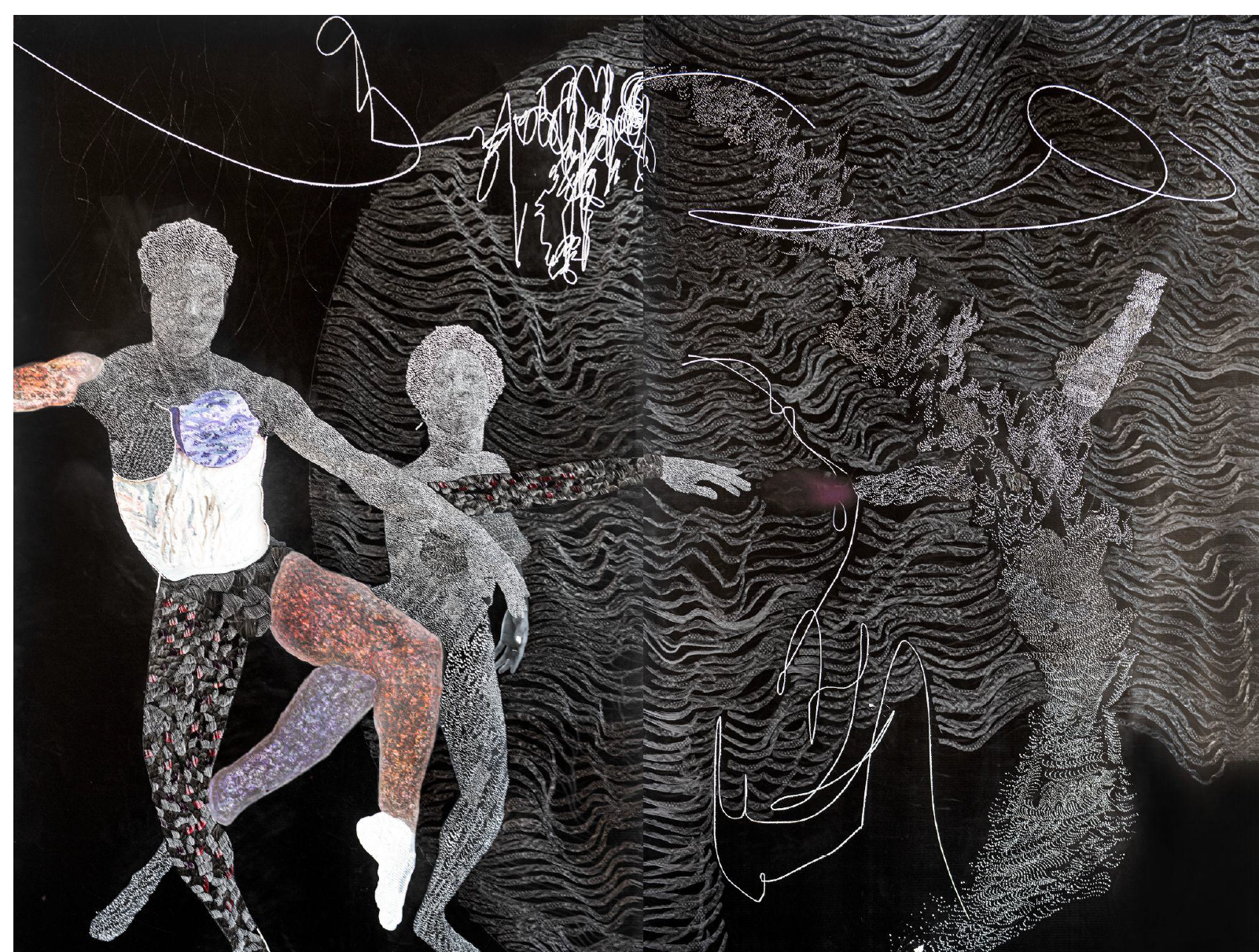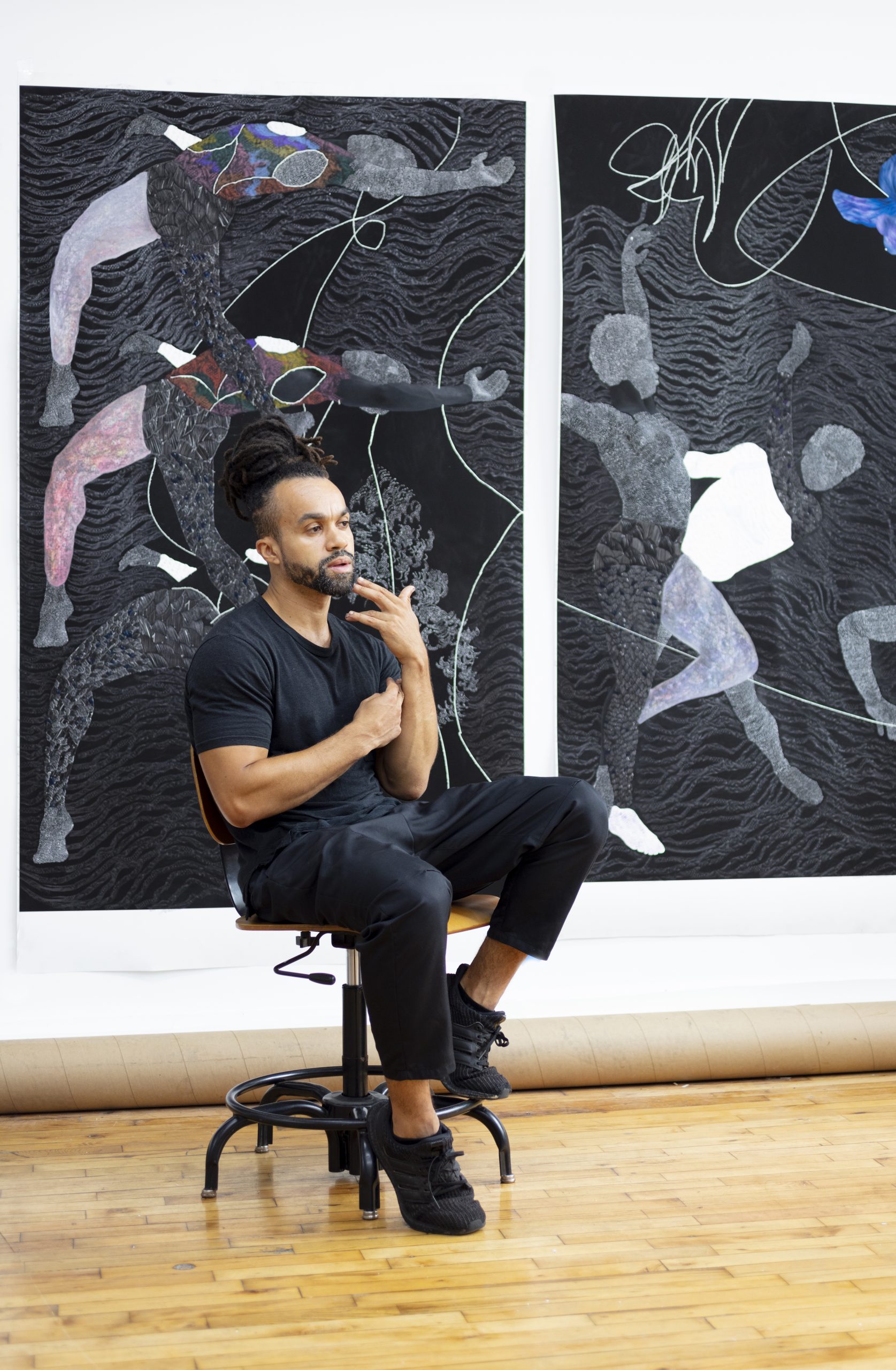
Where Things Happen #6 — Aug 2022
Nate Lewis makes use of a very specific visual grammar, rarely seen today in the arts, as mostly informed by his background in critical care nursing and medicine
Anatomy, x-rays and ultrasounds, influence his visual language, as the artist attempts in all his work to detect and then echo all the movements and the spontaneous beats generated both outside and inside living bodies.
In fact, shades and patterns are quite critical in medical diagnostics images to understand a patient’s condition: subtle alterations of shades, shapes, and textures can indicate the potential for change, but also reveal some aesthetic qualities that have been rarely explored by artists, and are what make Lewis’ language quite unique.
Nate Lewis never studied art, and his background is quite unusual, also among the self-taught artists active today: he first earned a Bachelor’s Degree in Nursing from VCU, and practiced critical-care nursing in DC-area hospitals for nine years.
His first artistic pursuit was playing the violin in 2008, followed by drawing in 2010.
Then he decided to leave his job, and make art his life, moving to New York City and starting an entire new chapter in 2017.
The technique he uses is also quite special: primarily known for his works on paper, Nate treats the surface as a powerful receptacle of senses, where the touch definitely prevails.
Through the artist’ treatment, the paper’s surface is turned into a palpable skin, as he creates different textures in relief, or digging and engraving over it.
Challenging the limits usually attributed to works on paper, Nate reveals in this way the unexpected both painterly and sculptural characters of the medium, creating vibrant patterns and textures in quite light and fragile sort of bas-reliefs.
In most of his works Lewis practice consists in going over the lines of printed images and with minutious movements with a scalpel, lifting the edges, he interrupts the regularity of the surface for a new epidermal and lively vibrancy.
In this way the paper turns into an organism, as the artist sculpts patterns and textures akin to cellular tissue and uncovers and reactivate anatomies of the originally photographed subjects.
“Interacting with images is an act of care,” Lewis explains “I explore and question the history of the subject, mirroring the abilities of diagnostic lenses in my own language of seeing and listening. The textures and patterns I create resonate with the rhythms and sounds I listen to.”
In fact, his works have a specific rhythm, reflected both on these lively surfaces and in the dancing bodies that they often represent.
Bodies in movement, and music in particular, play a great role in the artist’ practice – in fact, you will always find music in his studio while he’s working.
This musicality returns in most of his works, as attempts to capture, record and amplify the different internal beats of our bodies and living energies.
Especially in his “dancing figures”, the bodies expand on the surface as if the movements generated by their energies resonated and expanded in waves and pulses on the air. .
All unique this approach to the body’ representation is driven by the artist’s deep interest in understanding and exploring how the nuanced ways of looking at and listening to a body, may profoundly influence how we perceive and conceive our body, as well as how we consequently approach the world.
It wasn’t the first time in Nate’ studio,.
The first time I was there in September: he had just relocated in the building, which is located in an area on the South of Bronx where so many other artists’ studios are now, as the gentrification in the city across Manhattan and Brooklyin advances.
He comes down with all his serenous energy, guiding me up and through the building’ mesmerizing labyrinth where his working space is located: his studio is in fact inside a space owned by a collector and almost obsessive accumulator of memorabilia.
We have to go through an entire corridor of vintage furniture, from abandoned American diners seats, to old sewing machines and decontextualized commercial billboards.
Some months had already passed since my last vst, and I found his studio in sheer ferment: Nate is looking now for new ways to enrich the surfaces of his works, first of all introducing more pigments and understanding how they can amplify movements, determine syncopated moments, or just vitalize the primarily black/white tones he was most often used to use to create.
Meanwhile, he would also like to focus again on some purely white-background works on paper, and explore some more sculptural applications over them, as he used to do in the past.
As he confesses, he pulls out some very early work, where abstract works made of paper emerge from the surface as applications and manifestations of the inside and outside.
Meanwhile, he’s also thinking about an immersive video, where those visceral movements and textures drawn from diagnostic images can be projected in the space, so that these palpitations become truly present, palpable.
As Nate also observes, he has just started to make art a few years ago, and there are still so many directions and possibilities he wants to explore.
The next chance will be an upcoming show in September at Fridman Gallery, in nyc.
Despite it seems that Nate has found already a very specific and recognizable visual grammar which is already largely appreciated both by the market and institutions in few years he was able to be included in major museums collections across the country, and abroad), we can see in Lewis a strong desire to not exclude any possibilities to further expand his practice, and advance his work that can make us guess how there’s so much else to come.






























